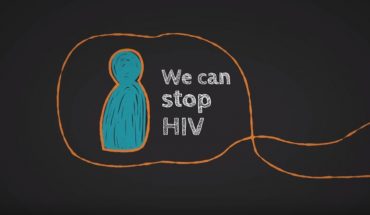Chemsex, men having sex with men under the influence of certain illicit drugs often with multiple partners, has already been identified as a ‘health priority’. The practice, which is part of a growing subculture in the gay community, has been linked to a steep rise in the number of STIs among men who have sex with men. In 2014, for the first time for over a decade, gay men made up the majority of new cases of HIV, reversing a trend which started in the 1990s. Chemsex, which can involve a combination of drugs including mephedrone, not widely available until around 2005 and made illegal in the EU in 2010) crystal meth and GHB/GBL, loosens inhibitions and allows participants to have sexual sessions lasting hours or even days.
Many men who participate in chemsex do so at ‘chill out’ parties (sex parties at private residences); which they may only attend infrequently, often having successful careers and leading otherwise ‘normal’ lives between these sessions. They often do not identify as ‘drug users’ in terms of the typical stereotype and may, therefore, be less likely to attend substance misuse services when they start experiencing problems with their drug use.
But it is very easy for the lifestyle to take over. Some of the drugs are addictive and cause severe withdrawal symptoms if you try to quit. There is also peer pressure. People report they feel that joining chemsex parties may be the only way they can find a sexual partner in a scene that is driven by online social networks and dating apps.
At Sexual Health clinics, we get a glimpse into the chemsex lifestyle when people come to us about their sexual health problems. We have noticed a steep increase in numbers of people with gonorrhoea, syphilis, Hepatitis C and LGV linked to chemsex, although it is hard to prove that there is a definite correlation since there is a dearth of data.
However, we do see that there are clusters of STI transmissions associated with particular geo-social apps which facilitate chemsex. These apps do sometimes allow advertising for free HIV tests, but are often reluctant to be more any more forceful and project a safe sex and drug messages directly to their clients, perhaps understandably since this would kill the mood. Lack of inhibition means that protected sex is often forgotten in the heat of the moment, or the condoms simply run out by the closing stages of a weekend party, putting people at risk of STIs and HIV.
Some users reduce the risk of contracting HIV by seeking out partners and parties who disclose their positive status via the apps, however, they are not protected against other STIs and indeed may be more at risk for certain STIs such as Hepatitis C, syphilis and LGV.
At the moment, chemsex is largely a MSM activity, but gay subculture has often been at the vanguard of more widespread social change. It may be that chemsex becomes more predominant in heterosexuals too.
Whilst the majority of gay men are not involved in chemsex, it is an increasing problem for a small minority and in my opinion, while we need to recognise that the practice is here to stay, it could be much safer. People need to be kept informed about the risks and helped to avoid the pitfalls,and specialised services need to be easily accessible and acceptable to those who encounter problems.
Dr Ann Sullivan is speaking at the RSM event, Substance Misuse: Everybody’s Business tonight on Chemsex: The interface between sexual health and recreational drug use.
- Chemsex: fuelling STDs - 10th October 2016






